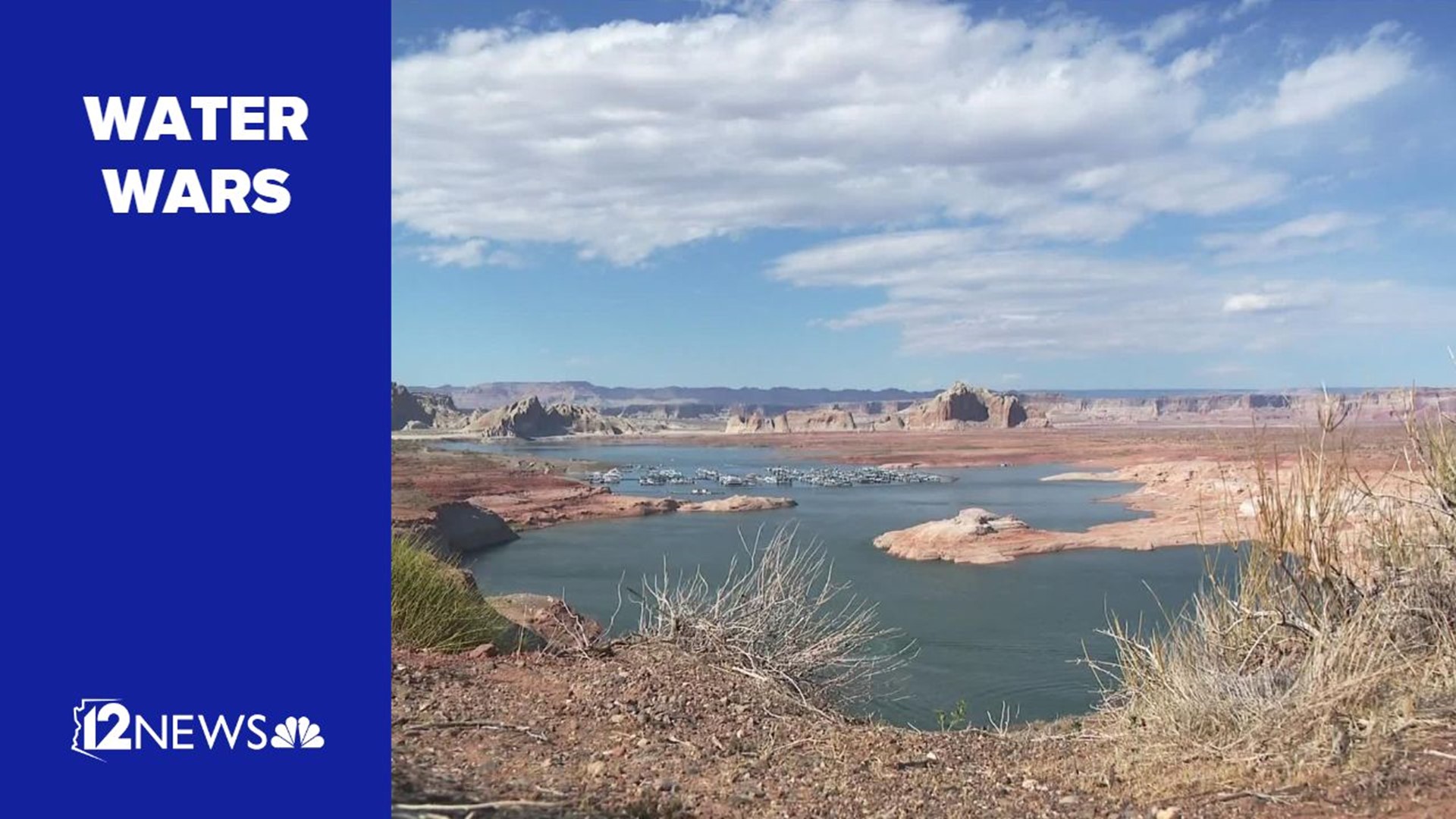LAS VEGAS — Hundreds of representatives from Arizona, California, Colorado, New Mexico, Nevada, Utah, and Wyoming converged in Las Vegas on Wednesday for the first day of the nation's largest conference on water.
The Colorado River Water Users Association kicked off its 77th annual conference where every state collaborates on solutions to issues surrounding the river and the ongoing drought.
The conference touches on issues that affect the lives of every resident of the U.S. Southwest, and potentially the nation as a whole. The amount of river water states receive is often shaped by the conversations that happen at these yearly conventions.
Here are live updates on those conversations:
A first-century (of the compact) retrospective
"Our river is in trouble," said Brenda Burman, Executive Strategy Advisor at the Central Arizona Project. "Our reservoirs are in pretty desperate shape. The savings account we have used for the past 22 years is getting closer and closer to difficult times."
It was the statement that kicked off a 45-minute summary of a century of Colorado River water policy.
The official kickoff to the conference was overfilled. The hundreds of chairs set up were not enough to sit everyone concerned about the river. Instead, people stood and lined the back and side walls of the room to listen as Burman relayed the hard-to-hear news.
"This is 100-plus years of everyone coming together to make sure the river works for everyone," Burman said.
The historical timeline laid out, starting at the 1922 Colorado River Compact, emphasized how much of the river system was built on faulty hydrology. Now, Colorado River officials are working to reform how the system is set up.
"What we've learned is that things are happening faster and faster and faster," Burman said. "We think we have something under control, we look up in 6 months, and we don't."
The panel ended with a look to the future. Rather than scraping the system built on incorrect science entirely, Burman advocated for experts to build on the system, calling it adaptable.
"Our job is to leave our communities and our ecosystem with a more stable, predictable water supply," Burman said. "That might not mean more water, that might mean the ability to work with less water."
Upper Colorado River Commission:
"The attendance here shows how difficult of a year it has been in the Colorado River basin," Commissioner for Colorado Becky Mitchell said to over three hundred people packed into the conference hall.
The commission is a collaboration of Colorado, New Mexico, Utah and Wyoming state representatives gathered to ensure compliance with the 1922 Colorado River compact.
Fallowing of agriculture fields, lack of snowpack and native wildlife dying due to dropping water levels were all shared mentions among each state representative. The commission said the formation of a "Demand Management Program" would work towards alleviating these issues and more.
The program's main focus would be providing compensation to water users who voluntarily conserve water in order to help ease the impact of future mandatory water cuts.
"We recognize that we are asking people in a significantly water-stressed environment to further curtail or reduce their [water usage]," said Commissioner for Wyoming Brandon Gebhart. "I quite frankly don't have any sense of how many folks are willing and able to participate as they consider their own additional reductions that are brought on by hydrology."
A Bureau of Reclamation representative also spoke at the meeting and outlined the underway Supplemental Environmental Impact Statement for the Colorado River. The statement is a compilation of research that would form the basis for future water cuts for each of the basin states and would potentially revise previously set recommendations and guidelines.
The research, and cuts, are expected to be announced in the Spring of 2023.
Colorado River Board of California:
California representatives hit the ground running by detailing Lake Powel and Lake Mead's critically low water levels, and for good reason.
The vast majority of water Southern California residents need to survive comes from the Colorado River, even though most of the state's available water is in Northern California.
"75 percent of California’s available water is in the northern third of the state (north of Sacramento), while 80 percent of the urban and agricultural water demands are in the southern two-thirds of the state," according to the Water Education Foundation.
Either of the lakes reaching critical water elevation would mean the dams would cease producing power and the river would effectively stop flowing.
"We're still not out of the woods ... we'll still probably decline further in Lake Mead," said board member Glen Peterson. "We really need a strong winter to bump those levels away from critical elevation."
The majority of the meeting was focused on highlighting the numerous conservation efforts among all of California's water districts, including water storage, agricultural water use and urban water consumption.
Water Wars
Water levels are dwindling across the Southwest as the megadrought continues. Here's how Arizona and local communities are being affected.

